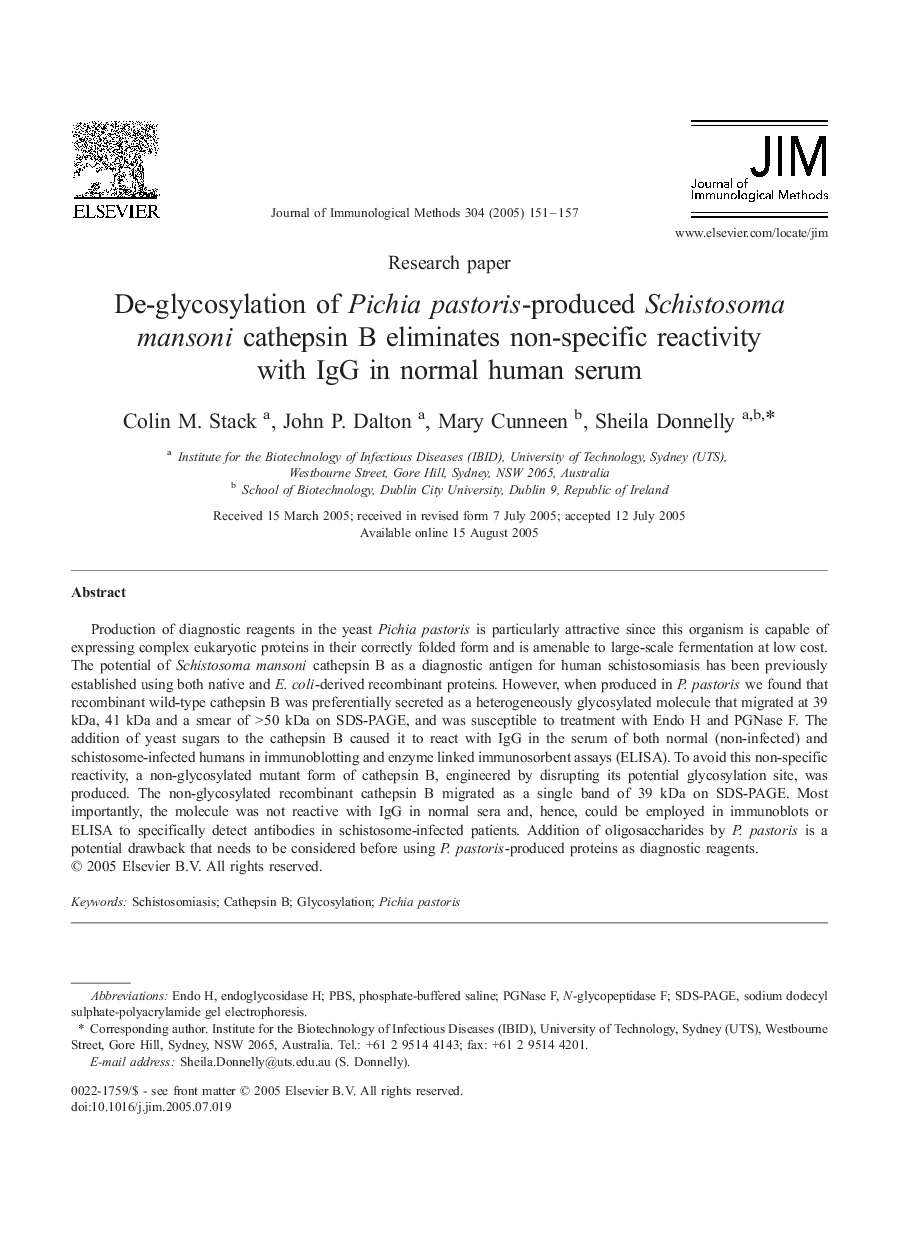| Article ID | Journal | Published Year | Pages | File Type |
|---|---|---|---|---|
| 9902240 | Journal of Immunological Methods | 2005 | 7 Pages |
Abstract
Production of diagnostic reagents in the yeast Pichia pastoris is particularly attractive since this organism is capable of expressing complex eukaryotic proteins in their correctly folded form and is amenable to large-scale fermentation at low cost. The potential of Schistosoma mansoni cathepsin B as a diagnostic antigen for human schistosomiasis has been previously established using both native and E. coli-derived recombinant proteins. However, when produced in P. pastoris we found that recombinant wild-type cathepsin B was preferentially secreted as a heterogeneously glycosylated molecule that migrated at 39 kDa, 41 kDa and a smear of >Â 50 kDa on SDS-PAGE, and was susceptible to treatment with Endo H and PGNase F. The addition of yeast sugars to the cathepsin B caused it to react with IgG in the serum of both normal (non-infected) and schistosome-infected humans in immunoblotting and enzyme linked immunosorbent assays (ELISA). To avoid this non-specific reactivity, a non-glycosylated mutant form of cathepsin B, engineered by disrupting its potential glycosylation site, was produced. The non-glycosylated recombinant cathepsin B migrated as a single band of 39 kDa on SDS-PAGE. Most importantly, the molecule was not reactive with IgG in normal sera and, hence, could be employed in immunoblots or ELISA to specifically detect antibodies in schistosome-infected patients. Addition of oligosaccharides by P. pastoris is a potential drawback that needs to be considered before using P. pastoris-produced proteins as diagnostic reagents.
Keywords
Related Topics
Life Sciences
Biochemistry, Genetics and Molecular Biology
Biotechnology
Authors
Colin M. Stack, John P. Dalton, Mary Cunneen, Sheila Donnelly,
